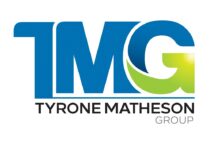Introduction
Welcome to strategic acquisitions, where the pulse of business beats in harmony with calculated moves and visionary foresight. In the competitive commerce arena, the path to sustained growth and market dominance often requires more than incremental steps—it demands bold, strategic maneuvers that redefine industry landscapes and unlock untapped potential. Today, we embark on a journey through the labyrinth of strategic acquisitions, where every decision holds the power to shape the future trajectory of businesses, catalyzing expansion and propelling enterprises toward unparalleled success. Join us as we delve into strategic acquisitions’ art, science, and transformative power—a realm where opportunity meets strategy and innovation converges with ambition.
Strategic Acquisitions: Accelerating Business Expansion
Strategic acquisitions serve as the catalyst for rapid and substantial business growth, akin to the force of rocket fuel propelling a spacecraft into uncharted territories. At their core, these acquisitions are meticulously planned maneuvers designed to position companies for success in dynamic markets strategically. Unlike organic growth, which may be slow and gradual, acquisitions offer a shortcut to market penetration, enabling companies to swiftly expand their reach and assert their presence in new territories. By acquiring established businesses or innovative startups, companies gain immediate access to valuable resources, including customer bases, intellectual property, and specialized talent, that would otherwise take years to develop organically.
What makes strategic acquisitions particularly potent is their ability to leverage synergies between the acquiring and acquired entities. Through careful due diligence and strategic planning, companies identify opportunities to combine complementary strengths, eliminate redundancies, and maximize efficiencies. This synergy amplifies the impact of the acquisition, generating more significant value than the sum of its parts. Whether accessing new markets, expanding product offerings, or enhancing operational capabilities, strategic acquisitions enable companies to achieve strategic objectives quickly and precisely. Essentially, they represent a strategic investment in future growth, laying the foundation for sustained success in an ever-evolving business landscape.
Identify markets and integrate new assets
Before embarking on the acquisition journey, forward-thinking businesses understand the critical importance of thorough market analysis and strategic alignment. This initial phase comprehensively evaluates target markets, including demographic trends, consumer behavior, and competitive landscapes. By understanding the market dynamics deeply, businesses can identify lucrative opportunities and assess the feasibility of potential acquisitions. Moreover, they meticulously evaluate the strategic fit between their existing operations and the target company, seeking synergies to enhance their competitive advantage and drive long-term value creation.
The integration process begins once the target market has been identified and strategic alignment established. Savvy businesses approach integration with meticulous attention to detail, focusing on seamless execution and minimizing disruptions to operations. This involves integrating new assets, technologies, and personnel into existing structures and processes while preserving both organizations’ core strengths. By fostering a culture of collaboration and communication, businesses ensure that the transition is as smooth as possible, allowing them to unlock hidden value and realize the full potential of the acquisition. In doing so, they lay the groundwork for sustainable growth and long-term success in an increasingly competitive marketplace.
Consolidate industry and access innovations
In today’s rapidly evolving business landscape, acquisitions serve as strategic maneuvers aimed at securing a larger market share and invaluable access to groundbreaking innovations. Beyond simply enlarging their footprint, companies recognize the transformative power of integrating cutting-edge technologies and novel ideas from acquired entities. By consolidating within their industry through targeted acquisitions, businesses position themselves as leaders in innovation, driving growth and maintaining a competitive edge in the market. These acquisitions provide access to proprietary technologies, research and development capabilities, and intellectual property that may have otherwise been out of reach, allowing companies to leapfrog ahead of the competition and pioneer new industry standards.
Through consolidation, companies create synergies that amplify the impact of their acquisitions, enabling them to capitalize on emerging trends and market shifts. By bringing together complementary strengths and expertise from different entities, businesses foster an environment conducive to innovation and creativity. This collaborative approach not only accelerates the pace of technological advancements but also enhances the industry’s overall competitiveness. As companies harness the collective power of their acquired assets, they solidify their position at the forefront of their respective fields, driving sustained growth and securing their relevance in an increasingly dynamic marketplace.
Expand globally and diversify product range
The strategic advantage of acquisitions extends beyond mere market expansion; it offers companies a gateway to global reach and product diversification. Businesses gain access to new geographies and untapped markets through strategic acquisitions, effectively broadening their horizons and unlocking a wealth of opportunities. By venturing into previously unexplored territories, companies can establish a foothold in lucrative markets and leverage their newfound presence to drive sustainable growth. Moreover, the diversification of product ranges accompanying strategic acquisitions allows companies to cater to a broader audience and mitigate risks associated with overreliance on specific markets or products.
Expanding globally through strategic acquisitions not only fuels immediate growth but also enhances the resilience of businesses in the face of market fluctuations and geopolitical uncertainties. By operating across multiple regions, companies can diversify their revenue streams and reduce dependence on any single market, thus increasing their overall stability. Furthermore, tapping into new geographies provides companies with invaluable insights into local consumer preferences, cultural nuances, and regulatory landscapes, enabling them to adapt their strategies accordingly and capitalize on emerging opportunities. In essence, strategic acquisitions serve as a tool for companies to navigate the complexities of the global marketplace and position themselves for long-term success and resilience.
Enter markets swiftly and enhance capabilities
In the relentless race of today’s business arena, agility and swiftness are paramount. Strategic acquisitions are the turbo boost that propels companies into new markets with unparalleled speed and efficiency. By bypassing the lengthy process of organic market entry, acquisitions allow businesses to seize time-sensitive opportunities and gain an immediate foothold in unfamiliar territories. This accelerated market entry enables companies to stay ahead of the curve and positions them as agile competitors capable of adapting swiftly to evolving customer demands and industry trends.
Moreover, strategic acquisitions not only expedite market entry but also enhance companies’ capabilities to meet the ever-changing needs of their customers. By acquiring established players or innovative startups, companies gain access to specialized expertise, technologies, and resources that can be leveraged to enhance their product offerings and service delivery. This infusion of new capabilities enables companies to stay at the forefront of innovation, anticipate customer preferences, and respond promptly to market shifts. In essence, strategic acquisitions serve as a tool for companies to expand their market presence and fortify their competitive position by staying agile and responsive in the face of change.

Foster collaboration, streamline operations, plan
Successful acquisitions transcend financial metrics and create synergies that drive long-term value creation. Beyond the balance sheet, successful acquisitions cultivate a culture of collaboration and teamwork across the newly integrated entities. By bringing diverse perspectives and expertise together, companies foster an environment where innovation flourishes, and employees are empowered to collaborate towards shared goals. This collaborative spirit enhances productivity and fosters a sense of unity and purpose, laying the foundation for sustained success.
Furthermore, successful acquisitions streamline operations and optimize processes to maximize efficiency and effectiveness. Through careful integration planning and execution, companies identify opportunities to eliminate redundancies, consolidate resources, and standardize workflows. By aligning cultures and values, companies create a cohesive organizational framework that enables seamless collaboration and communication. This optimization of operations drives cost savings and enhances agility and responsiveness, allowing the companies to adapt swiftly to changing market dynamics and seize new opportunities. In essence, successful acquisitions are about more than financial gain—creating a unified and aligned organization poised for long-term success in a competitive marketplace.
FAQs
Q: What are strategic acquisitions?
A: Strategic acquisitions refer to the deliberate purchase of another company as part of a long-term growth strategy. They are typically aimed at achieving specific business objectives such as expanding market presence, accessing new technologies, or diversifying product offerings.
Q: What factors should be considered before pursuing a strategic acquisition?
A: Before pursuing a strategic acquisition, companies should carefully evaluate factors such as market dynamics, synergies with existing operations, cultural fit, regulatory considerations, and potential risks and rewards associated with the transaction.
Q: How do companies finance strategic acquisitions?
A: Companies may finance strategic acquisitions through various methods, including cash reserves, debt financing, stock swaps, or a combination of these approaches. The chosen financing method depends on factors such as the company’s financial health, the size and complexity of the acquisition, and market conditions.
Q: What risks are associated with strategic acquisitions?
A: Risks associated with strategic acquisitions include overvaluation, integration challenges, cultural differences between the acquiring and acquired companies, regulatory hurdles, and the potential for disruption to existing operations. However, thorough due diligence and strategic planning can help mitigate these risks.
Q: How do strategic acquisitions differ from mergers?
A: Strategic acquisitions involve one company acquiring another to achieve specific strategic objectives, whereas mergers typically involve merging two relatively equal entities to create a new, combined entity. Strategic acquisitions are often driven by a desire to access specific resources, capabilities, or market opportunities. At the same time, mergers may be motivated by synergy, cost savings, or market consolidation.
Conclusion
In conclusion, strategic acquisitions are a potent tool for accelerating business expansion and unlocking new opportunities. By identifying markets, accessing innovations, and fostering collaboration, companies can propel themselves to new heights of success. The art of acquisitions lies in meticulous planning, seamless integration, and a relentless pursuit of growth. So, are you ready to unlock growth and turbocharge your business expansion through strategic acquisitions? The power is in your hands.
Are you ready to turn the assets in and around your business into money? Let’s Talk!
